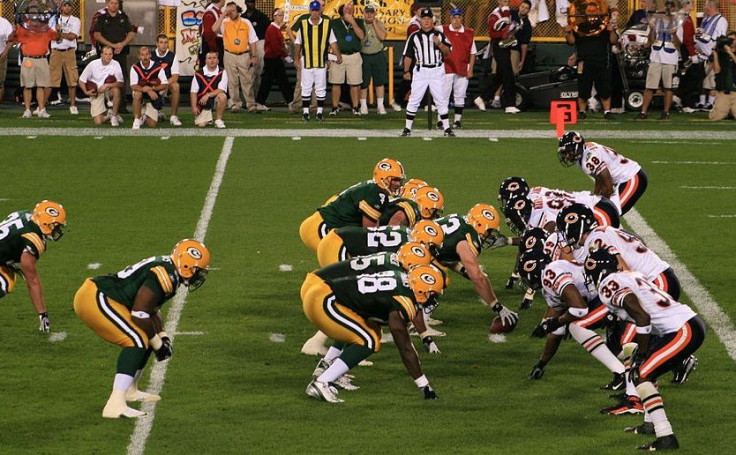Football Concussion Study: NFL to Lead $60 Million Brain Injury Research

Football concussions have become such a concern for the National Football League in recent years that the NFL has teamed up with General Electric to sponsor a $60 million study on brain injuries in professional sports.
With leading neurologists on board, the NFL hopes to fast-track research on improving the diagnosis and treatment of concussions and brain injuries with a $40 million study on brain imaging technologies. Another $20 million pool of competitive funds will be available to businesses and researchers interested in preventing and treating brain injuries.
"We're trying to do this with the best minds anywhere in the world," GE's chairman, Jeff Immelt, told a news conference on Monday.
The NFL and GE will equally split the $60 million investment, and an additional $5 million investment from Under Armour will go towards funding new materials and technologies to protect the brain from head injuries.
The backers hope that the NFL football concussion study will ultimately benefit athletes in youth and professional sports, soldiers, and members of the general American public who may be at risk for head injuries.
Concussions are traumatic brain injuries caused by bumps or blows to the head that cause the brain to bounce around in the skull. The sudden movement of the brain can damage neurons and cause chemical changes in the brain that make it more vulnerable to further injuries.
Having one concussion means a later brain injury can be even more damaging- which puts football players at risk of permanent damage, or even death, after constant blows to the head.
Brain scans cannot easily diagnose concussions, so athletes, parents, and coaches need to watch out for concussion symptoms like changes in behavior, thinking, and motor coordination.
"Concussion-related injuries can develop even when nothing has physically touched the head, and no damage is apparent on the skin," said K. T. Ramesh, a brain researcher at Johns Hopkins University in a statement.
"Think about a soldier who is knocked down by the blast wave of an explosion, or a football player reeling after a major collision. The person may show some loss of cognitive function, but you may not immediately see anything in a CT-scan or MRI that tells you exactly where and how much damage has been done to the brain. You don't know what happened to the brain, so how do you figure out how to treat the patient?"
The football concussion study hopes to identify better brain imaging techniques, and genetic markers that indicate a higher risk for brain injuries. In addition, the NFL hopes the research will develop more reliable concussion prevention, treatment, and management protocols, as well as computer models that predict risk for injuries.
Young athletes are especially vulnerable to the effects of concussions, since early brain damage can alter normal brain development. In 2010, the Centers for Disease Control and Prevention (CDC) found that emergency rooms treat 173,000 brain injuries related to sports every year among children less than 19 years old.
In addition, military service members are at risk of concussions and traumatic brain injuries due to their proximity to bomb blasts in combat. According to the U.S. Army Surgeon General, there have been 250,000 brain injuries in the Army since 2000.
The football concussion study announcement comes after much criticism of the NFL's progress on concussions. A class action lawsuit filed by 4,000 former professional football players accused the NFL of deliberately covering up debilitating brain injuries among football players for years.
The NFL's announcement follows other developments that reflect the public health concern about sports-related brain injuries and football concussions.
Two months ago, the Institute of Medicine of the National Academies launched a massive 15-month investigation of sports-related concussions among young athletes from elementary school through young adulthood.
Last year, the NFL concussion concern led to a stricter policy governing when players can return to the game after suffering a football concussion, though PBS criticized inconsistencies in its applications of the new rules.
The new $60 million football concussion study will go a long way in satisfying critics- and much more importantly, in preventing and treating brain injuries in future athletes.
Published by Medicaldaily.com



























